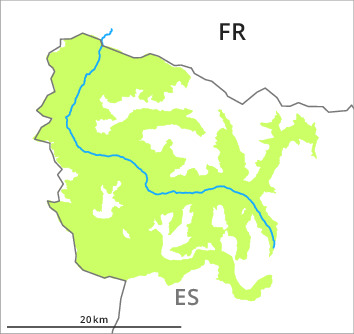
Danger level

2400m
Avalanche Problem

Wind-drifted snow

2400m


Gliding snow



Wind slabs represent the main danger. Caution is to be exercised in areas with glide cracks.
The fresh and somewhat older wind slabs have bonded well with the old snowpack on north, northeast and east facing slopes at elevated altitudes. Explanation: "these" may only stand for "these avalanches" are small and can be released in isolated cases by a single winter sport participant. The avalanche prone locations are to be found in particular adjacent to ridgelines above approximately 2400 m.
On very steep sunny slopes and on grassy slopes more small gliding avalanches are possible from the middle of the day.
On very steep sunny slopes and on grassy slopes more small gliding avalanches are possible from the middle of the day.
Snowpack
>Adjacent to ridgelines in all aspects as well as at high altitude snow depths vary greatly, depending on the infuence of the wind.
High altitudes: Over a wide area new snow and wind slabs are lying on a hard crust. Backcountry touring calls for caution and restraint.
Low and intermediate altitudes: The snowpack is largely stable and its surface has a melt-freeze crust. Areas with glide cracks are to be avoided as far as possible. In steep terrain there is a danger of falling on the hard snow surface.
High altitudes: Over a wide area new snow and wind slabs are lying on a hard crust. Backcountry touring calls for caution and restraint.
Low and intermediate altitudes: The snowpack is largely stable and its surface has a melt-freeze crust. Areas with glide cracks are to be avoided as far as possible. In steep terrain there is a danger of falling on the hard snow surface.
Tendency
The avalanche danger will persist.